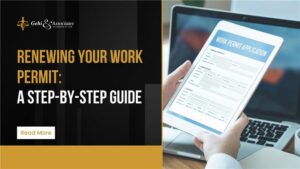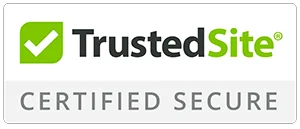Renewing a work-permit visa can feel like trying to race against an invisible clock. Understanding how to renew your Employment Authorization Document (EAD) is crucial to keeping your life and livelihood in motion. Many immigrants are either misinformed, too late, or completely unaware of the vital updates USCIS has rolled out for 2025.
So, what’s changed? A lot. USCIS now offers up to 540 days of automatic extension for certain categories. This is one of the biggest lifelines in years for eligible workers facing renewal delays. But that lifeline comes with strings. File too early, too late, or mail the wrong version of Form I-765, and your application could bounce back.
At Queens Immigration Attorney, we guide you through the maze of forms and deadlines. Whether you’re adjusting your status, a DACA recipient chasing your dreams, or a spouse of an H-1B worker. Our attorneys break down all the steps needed to renew your work-permit visa. Helping you protect your ability to live and work in the U.S.
Key Insights:
- Form I-765 must be filed at least 90 days before your current EAD expires. This is done to avoid a lapse in employment authorization.
- The current edition date of Form I-765 required by USCIS is 01/20/25. Using any previous version will result in rejection.
- Applicants under category (c)(8) must wait 150 days after filing for asylum before submitting Form I-765.
- You can file Form I-765 renewal applications up to 180 days in advance if you are under category (c)(37).
- USCIS will reject any unsigned Form I-765, regardless of whether the rest of the application is complete.
- Automatic extensions under category codes like (A17), (A18), and (C26) cannot exceed the applicant’s I-94 expiration date.
What are the Exact Steps to Renew a Work-Permit Visa in 2025?
Renewing your work-permit visa in 2025 demands accuracy and attention to detail. USCIS has rolled out critical updates, new edition dates, filing timelines, mailing rules, and automatic extension policies. Mistakes like submitting the wrong form version could result in a rejection that delays your right to work. A seasoned Queens immigration attorney can help you file correctly and avoid costly delays. This way, your employment authorization continues uninterrupted.
Step 1: Determine Your Eligibility Category
Before doing anything, check your current EAD card for your eligibility category. This code determines your renewal rules. USCIS uses specific category codes to define your work eligibility. Filing under the wrong code will result in denial or delay. Common eligibility codes include:
- (c)(9): Adjustment of status applicants with pending I-485
- (a)(5): Asylees granted asylum
- (c)(8): Asylum applicants who filed 150 days ago
- (c)(26): Spouses of H-1B visa holders
- (c)(33): DACA recipients under the 2012 Deferred Action program
You must use the new eligibility category on your I-765 form if your status has changed. Queens-based applicants often face confusion here, especially when moving between categories. Don’t guess your category; consult a legal professional to avoid rejection.
Step 2: Complete Form I-765 (Current Edition: 01/20/25)
USCIS requires the 01/20/25 edition of Form I-765 for all filings in 2025. Using an outdated version, even by one page, will trigger automatic rejection. This is one of the most common mistakes first-time renewers make. You can file the form in 2 ways:
- Online through your USCIS account
- By mail, using the correct filing address listed on the USCIS Lockbox filing locations page
Double-check that every page of your form is from the 01/20/25 edition. Sign it in ink; unsigned forms will be rejected without notice. Many applicants in Queens miss this detail and end up re-filing, losing weeks in processing time.
Make every form count, read our guide for Queens residents before you file.
Step 3: Collect Your Supporting Documents
Your renewal application must include all required supporting documents. Missing even one can delay your EAD approval.
Include the following:
- A copy of the front and back of your most recent EAD card
- Your I-94 arrival/departure record, printed from the CBP website
- Your Form I-797 receipt notice
- A clear, legible copy of your passport’s biographic page
- Two unretouched, passport-style photos taken within the last 30 days
USCIS has become increasingly strict about photo quality. Do not submit retouched, filtered, or mounted images. These errors can cause delays or trigger requests for in-person identity verification.
Collecting these documents early and carefully can prevent processing disruptions later. A Queens immigration attorney can help you prepare a full, compliant packet that passes USCIS scrutiny the first time. Take a moment to read reviews from clients who have trusted us with their renewals
Step 4: Pay the Fee or Submit Form I-912 for a Waiver
USCIS accepts payment by check, money order, or credit card (using Form G-1450). Fee amounts are subject to change, so always verify current rates with the USCIS Fee Calculator. Some applicants may qualify for a full fee waiver using Form I-912. Eligible groups include:
- Asylum applicants under category (c)(8)
- VAWA petitioners
- TPS recipients with financial hardship
- Military parolees under IMMVI (must write “IMMVI” at the top of Form I-765)
If you’re unsure whether you qualify for a waiver, consult an immigration attorney. Incorrectly filed waiver requests can lead to rejection.
Step 5: Submit Online or by Mail
You can file Form I-765 online or by mailing it to a USCIS Lockbox. Your eligibility category determines where to send your packet, so follow the filing address guide closely. If submitting online:
- Scan and upload all documents clearly
- Complete and attach Form G-1145 for email/text notifications
If mailing:
- Use the correct address for your category
- Do not combine payments or include other unrelated USCIS forms
Step 6: Wait for Your Receipt Notice (Form I-797C)
Once USCIS receives your application, Form I-797C will be issued. This document confirms that your case is in process. It also includes your case number, receipt date, and eligibility category. Save this notice immediately. It’s essential for tracking your application status and proving eligibility for the 540-day automatic extension. You can track your case using the USCIS Case Status Tool online. If you filed Form G-1145, you’ll also get email or text updates.
Step 7: Benefit from the 540-Day Automatic Extension (If Eligible)
USCIS now offers up to 540 days of automatic work authorization extension for certain eligible categories. This extension begins the day after your current EAD expires and ends. This is either when USCIS issues a decision or when the 540-day period is over.
You qualify if:
- You filed Form I-765 on time
- You filed under a qualifying category such as (c)(8), (c)(9), (c)(10), (a)(12), or (c)(26)
- Your receipt notice matches your current EAD eligibility code
Present your expired EAD and receipt notice to your employer to maintain your work status legally. Just be sure your I-94 hasn’t expired; extensions do not override I-94 limits. This policy update is one of the most important protections for immigrants who face long processing times.
How Changes in Immigration Status or Employer Affect Your Work-Permit Visa Renewal Eligibility
Immigration status isn’t static. Many immigrants in Queens start under asylum, DACA, or TPS. They later qualify for green cards or new employment categories. These shifts can significantly affect your eligibility to renew a work-permit visa. USCIS uses strict eligibility codes. Your category must always reflect your current status. If your category changes but your form does not, USCIS will likely reject your application.
Changing from Pending Asylum to Green Card
If you applied for asylum and later filed a green card application, your work-permit eligibility category must change. Originally, you would file under category (c)(8) as an asylum applicant. Once your Form I-485 is filed, you switch to category (c)(9) for adjustment of status.
Switching Employers with a Work Visa
If you hold a visa like an H-1B, your legal employment is tied directly to your sponsoring employer. Your EAD may not be required under H-1B, but your immigration benefit depends on that job. If you switch employers, you must act quickly. Your new employer must file Form I-129 to transfer your H-1B petition. Without it, your status and ability to work could lapse.
Adjustment of Status While Holding EAD
This applies if you filed Form I-485 to adjust status and received an EAD under category (c)(9). Your ability to renew depends on that pending application. You can continue to renew your EAD under (c)(9) as long as your I-485 remains active. Make sure to always include your I-797C receipt notice with your I-765 renewal.
FAQs
Is H-1B a visa or work permit? H-1B is a nonimmigrant visa that allows foreign workers to be employed by U.S. companies. It is tied to a specific job and employer, meaning you can’t freely switch jobs without employer action. It does not grant broader employment authorization beyond the sponsoring employer. A work-permit visa provides more flexibility across job types and industries.
Which is better: a work permit or a work visa? Neither is better in all situations; it depends on your goals and immigration path. A work visa like H-1B is tied to a single employer and often leads to long-term sponsorship. A work-permit visa (EAD) allows more freedom because it isn’t employer-specific. However, EADs usually depend on your underlying immigration status and may not be renewable forever.
What is your immigration status if you have a work permit? A work-permit visa does not define your legal status in the U.S. It simply shows that you are allowed to work. Your actual status might be “pending asylum,” “TPS,” or “adjustment of status,” depending on your case. USCIS uses the eligibility code on your EAD to connect it to your legal basis for work. Always renew both your status and your EAD to stay authorized.
What are the benefits of a work permit? With a valid work-permit visa, you can legally work for any employer in the U.S. It also allows you to apply for a Social Security Number, essential for taxes and job eligibility. In some cases, it may make you eligible for a driver’s license or public benefits. Most importantly, it prevents work gaps that could affect future immigration options.
Can I get a green card if I have a work permit? A work-permit visa does not automatically lead to a green card. However, many applicants for green cards, such as those adjusting status, receive EADs during their application process. The EAD lets you work legally while your green card is pending. Still, having a work-permit visa alone does not guarantee green card approval.
Your Right to Work Is Worth Protecting. Let’s Renew It, Together
Renewing your work-permit visa isn’t just a formality. It’s a declaration of your presence, labor, and future in this country. It’s how you hold onto the job you love, the bills you pay, and the family you provide for. With ever-evolving USCIS rules and tight filing windows, getting that renewal wrong could cost you months of waiting. Queens Immigration Attorney helps you understand the eligibility nuances, track your timing, and gather the right documents. Book a free consultation now!





